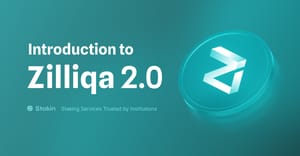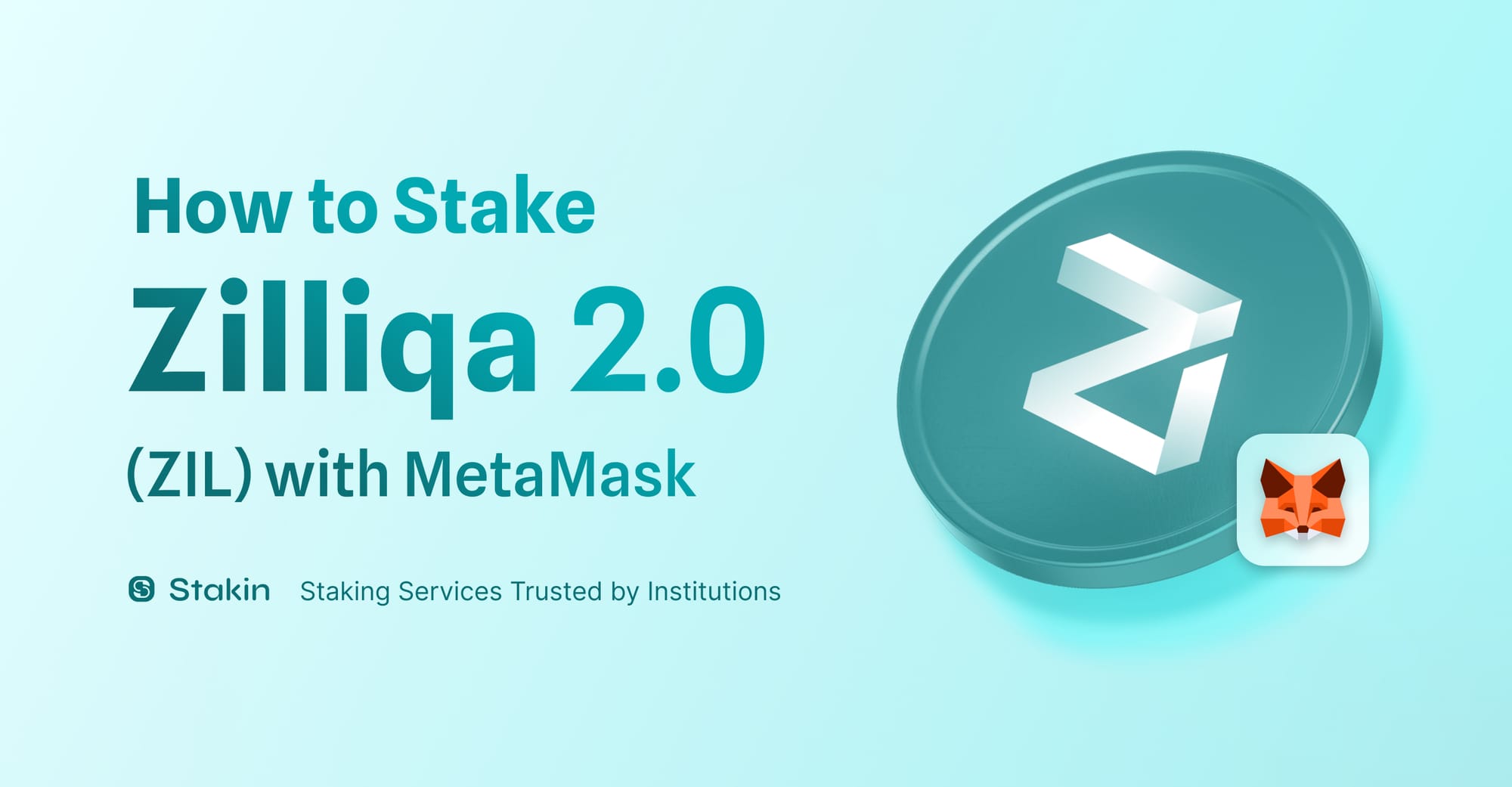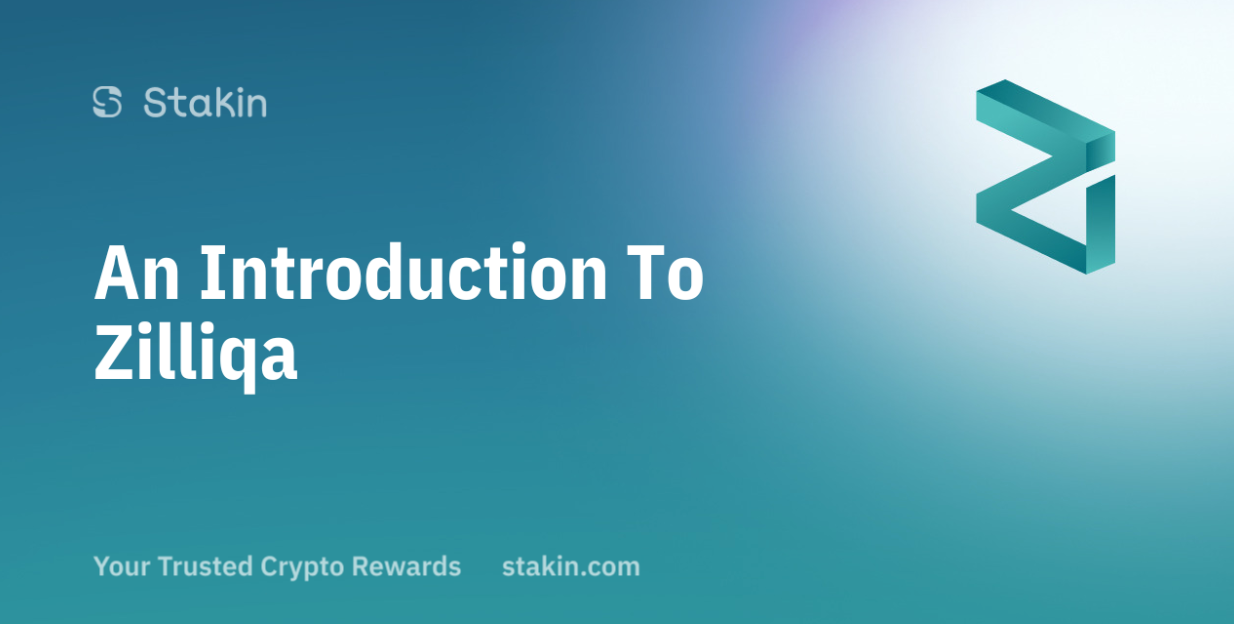Zilliqa 2.0 is a full protocol migration to a new architecture built on Proof-of-Stake (PoS), designed to replace the legacy Zilliqa 1.0 system while maintaining backward compatibility. It introduces a completely new consensus layer powered by Pipelined Fast-Hotstuff, along with a streamlined validator model, redesigned staking contracts, native EVM and Scilla smart contract support, and more efficient on-chain accounting.
Unlike a typical upgrade, Zilliqa 2.0 is a new protocol launched in parallel with Zilliqa 1.0 and designed to inherit its full state, balances, smart contracts, and accounts, through a seamless chain migration. This new system significantly reduces network overhead, improves block finality (targeting ~2 seconds), and enables scalable permissionless participation by both validators and delegators through a new dual-layer staking framework.
Zilliqa 2.0 also removes technical debt from the previous network structure: DS epochs, mining, and sharded committees have been replaced by a lean validator set (~32 nodes) that uses stake-based incentives and performance-based rewards. The transition also includes fully redesigned delegation logic with support for liquid staking tokens (LSTs) and non-liquid reward-claiming mechanisms, giving ZIL holders greater flexibility in how they participate in network security.
Zilliqa 2.0 introduces a new protocol architecture that goes beyond performance improvements. It restructures governance mechanisms, developer infrastructure, and validator incentives, while maintaining continuity with the existing ecosystem and supporting compatibility with both Scilla and EVM environments.
Technical Highlights of Zilliqa 2.0

Zilliqa 2.0 introduces a reengineered protocol architecture that replaces the foundational components of Zilliqa 1.0. Rather than building incrementally on the previous system, this upgrade establishes a clean baseline: integrating a new consensus engine (Pipelined Fast-Hotstuff), a consolidated validator model, redesigned staking infrastructure, and dual support for both Scilla and EVM smart contracts.
The result is a system designed to reduce operational complexity, accelerate block finality, and expand developer flexibility, while preserving the full state, contracts, and balances from the original network.
Accelerated block finality, with average block times reduced to approximately 2 seconds
Zilliqa 2.0 achieves faster finality through a pipelined implementation of the Fast-Hotstuff consensus protocol. In typical conditions, blocks are finalized after just two confirmations, resulting in an average block time of approximately 2 seconds. This design significantly improves transaction throughput and ensures deterministic finality, even during periods of high network load.
Validator Set Rationalization
The legacy dual-layer architecture (DS and shard nodes) is removed. Zilliqa 2.0 operates with a single-tier validator set of ~32 nodes, reducing overhead and complexity while preserving Byzantine fault tolerance through deterministic consensus.
Staking System Overhaul
The staking architecture is fully rebuilt. Instead of interacting with system-level contracts, users now stake via audited smart contracts that support two delegation models:
Liquid Staking: Users receive a non-rebasing Liquid Staking Token (LST) representing their proportional stake, redeemable at exit.
Non-Liquid Staking: Users retain a locked principal and periodically claim or restake ZIL rewards. Reward claiming rights are transferable via an address update mechanism.
Clean State Migration
Accounts, balances, contracts, and chain state are migrated at the protocol level. No user-side redeployment or reconfiguration is required for smart contracts. The transition is designed to be seamless for existing dApps and token holders.
Native Dual-VM Execution (Scilla + EVM)
The upgraded Zilliqa protocol introduces native support for both Scilla and EVM-compatible smart contracts within a unified execution environment. This dual-VM architecture enables developers to deploy contracts using either language and expands compatibility with widely adopted Ethereum tooling and standards. Interoperability between EVM and Scilla contracts is expected to be introduced progressively following the mainnet launch.
Simplified Node and API Stack
Zilliqa 2.0 introduces structural improvements to how nodes store, access, and report state. Node upgrades no longer require full persistence re-downloads, significantly reducing downtime, bandwidth consumption, and synchronization delays during version upgrades or restarts. This change enhances reliability for validator operators and streamlines network maintenance.
In addition, account balances are now stored internally in Wei, rather than in Qa as in Zilliqa 1.0. While non-EVM interfaces still report balances in Qa for continuity, API-level abstractions automatically scale units, ensuring consistency across both EVM-based and native Scilla tooling. This change aligns Zilliqa’s internal accounting with Ethereum conventions, improves cross-compatibility, and removes the need for custom handling of unit conversions in dApp and wallet development.
Backward Compatibility Maintained
Zilliqa 2.0 preserves full compatibility with the application layer of Zilliqa 1.0. All smart contracts, account states, token balances, and deployed dApps are migrated at the protocol level without requiring redeployment or reconfiguration. Existing token standards, contract interfaces, and API endpoints continue to function as expected, ensuring that developers and users experience no disruption in application behavior during or after the upgrade. This design ensures continuity across the ecosystem while enabling future protocol improvements beneath the application layer.
Key Dates: Migration Timeline

📍 Final Transactions on Zilliqa 1.0: Accepted up to block 4769950
📍 Zilliqa 1.0 Ends: At block 4770087
📍 Zilliqa 2.0 Migration Begins: June 23, 2025
📍 Mainnet Launch: A few days after June 23
These dates are critical for delegators, as staking on Zilliqa 1.0 will no longer be supported after this transition period
Stakin’s Role in Zilliqa 2.0
As a trusted validator across more than 30 Proof-of-Stake networks, Stakin is fully aligned with the rollout of Zilliqa 2.0 and committed to supporting its community through the transition. As part of this upgrade, Stakin will:
- Operate an active Zilliqa 2.0 validator node from the start of the network upgrade
- Participate in the validator set and receive delegations from users via supported staking pools
- Provide educational resources, migration guidance, and staking instructions tailored for ZIL holders.
- Maintain high infrastructure reliability, ensuring uptime and performance as the network transitions to its new architecture.
By staking with a trusted validator like Stakin, delegators can participate in Zilliqa 2.0 with confidence, knowing they are aligned with an operator experienced in large-scale PoS environments.
Frequently Asked Questions (FAQ)

1. What is the difference between Zilliqa 1.0 and Zilliqa 2.0?
Zilliqa 2.0 replaces the original Proof-of-Work consensus with a high-performance Proof-of-Stake model powered by Pipelined Fast-Hotstuff. It introduces faster block finality (~2 seconds), a reduced validator set (~32 nodes), dual-environment smart contract execution (Scilla and EVM), and a new staking framework based on smart contracts. The upgrade re-architects the protocol while preserving backward compatibility with existing dApps, tokens, and APIs.
2. Do I need to do anything if I hold ZIL but don’t stake?
No immediate action is required for non-staking ZIL holders. All accounts, balances, and smart contracts are migrated automatically to Zilliqa 2.0. However, to benefit from the new staking rewards and delegation options, you will need to interact with the new staking contracts via the updated portal.
3. What do I need to do if I’m currently staking on Zilliqa 1.0?
If you have delegated ZIL under the legacy staking system, you must unstake your tokens before or shortly after block 4770087. Then, re-stake your tokens using the Zilliqa 2.0 staking portal, where you can choose between liquid staking or non-liquid staking options. Failing to migrate may result in missed rewards and locked funds under the deprecated system.
4. What are the benefits of liquid vs. non-liquid staking in Zilliqa 2.0?
Liquid Staking issues a Liquid Staking Token (LST) that represents your share of the pool. This token appreciates in value as rewards accumulate and can be redeemed for ZIL during unstaking.
Non-Liquid Staking locks your principal while allowing you to withdraw ZIL rewards or compound them over time. It also supports changing the reward-claim address.
Both models are deployed via official smart contracts developed and maintained by the Zilliqa team.
5. What happens if I don’t unstake from Zilliqa 1.0 before the migration?
If you do not unstake your ZIL before or shortly after the transition block (4770087), your funds will remain in the legacy staking contract and will no longer generate rewards. While your ZIL is not lost, it will become inactive until you manually unstake and migrate it to Zilliqa 2.0.
6. When does the Zilliqa 2.0 migration begin?
The migration officially begins on June 23, 2025. The final block of Zilliqa 1.0 will be block 4770087, after which staking on the old network will be deprecated. Mainnet operations on Zilliqa 2.0 will commence shortly thereafter.
7. Is Zilliqa 2.0 compatible with existing smart contracts and dApps?
Yes. Zilliqa 2.0 is fully backward compatible with all smart contracts, tokens, and applications deployed on Zilliqa 1.0. Developers do not need to redeploy or modify their codebases. The migration ensures continuity of service and user access without disruption.
8. Where do I go to stake on Zilliqa 2.0?
An official Zilliqa 2.0 staking portal will be launched during the transition. This interface will allow users to delegate to validators using either liquid or non-liquid staking contracts. Stakin will publish clear instructions and provide support throughout the migration process.
9. What role does Stakin play in Zilliqa 2.0?
Stakin operates an active Zilliqa 2.0 validator node and is part of the initial validator set. The team will receive delegations via staking pools, maintain secure infrastructure, and provide continuous education and migration support for ZIL holders.
DISCLAIMER: This is not financial advice. Staking, delegation, and cryptocurrencies involve a high degree of risk, and there is always the possibility of loss, including the failure of all staked digital assets. Additionally, delegators are at risk of slashing in case of security or liveness faults on some protocols. We advise you to do your due diligence before choosing a validator.



